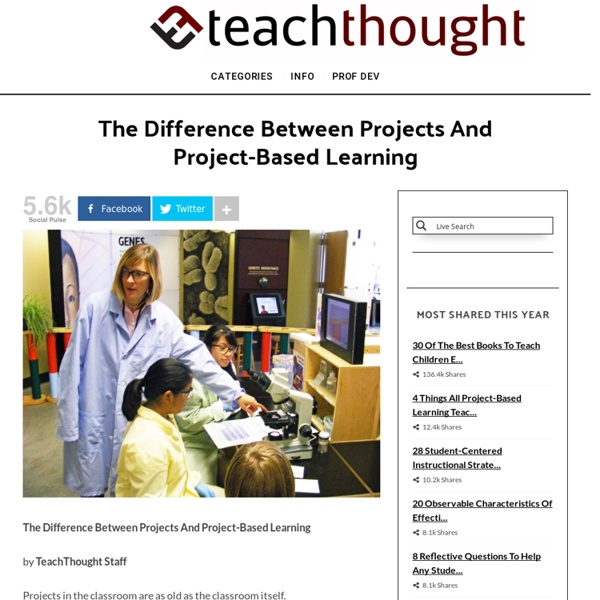3 Lessons From Teaching Our First PBL Unit
After attending the Buck Institute for Education’s PBL 101, we embarked on our first Project Based Learning (PBL) unit. At the workshop we learned that if you are just “doing a project,” don’t call it PBL. So one of our goals was to make it gold standard instead of just implementing a cool project.
See Sally Research: An Environmental Scan
No, it's not deja vu - you may have read this post over on Joyce Valenza's NeverEnding Search blog already. She and I were asked to write a book chapter for administrators (note to self: no cracks about reading level) on today's information literacy practices. Here is the result. The good stuff is all Joyce's work. (She is THE smartest person in libraryland - bar none.)
4 Ways to Promote Growth Mindset in PBL
Originally posted on GettingSmart.com. “I can’t do this! I hate geometry! I’m too dumb for this!” In our classroom, the word "can’t" was the worst four-letter word a student could use; after all, even the last three letters of "geometry" insist that you T-R-Y….TRY! The student’s outburst is a classic example of fixed mindset.
(Rethinking) Makerspaces
Kids have always made in my library. We encouraged digital and visual and dramatic and rhetorical creativity before, during, and after school. But for a while, I’ve questioned the value of using already heavily used real estate to randomly carve out space for a 3D printer, electronics stations and sewing machines.
8 Essential Elements of Project Based Learning — Project Based Learning
If you follow me on Twitter, or have ever read my blog, you know I am a big fan of Project Based Learning (PBL). I firmly believe an emphasis on creative, innovative projects (not the dioramas from our childhood) challenges the current paradigm of education. PBL makes learning relevant, engaging, and authentic. PBL demands and develops 21st century skills like creativity, collaboration, communication, and critical thinking.
What is PBL?
To help teachers do PBL well, we created a comprehensive, research-based model for PBL — a "gold standard" to help teachers, schools, and organizations to measure, calibrate, and improve their practice. In Gold Standard PBL, projects are focused on student learning goals and include Essential Project Design Elements:
8 Essential Elements To PBL
Supported file types: .doc/.docx, .xls/.xlsx, .ppt/.pptx, .pdf, .jpg, .jpeg, .png, .gif, .bmp Max file size: 25 MB Supported thumbnail types: .jpg/.jpeg, .png, .gif, .bmpMax upload size: 500 kB You completed:Project Based Learning Next up: Continue » Color Preview (not actual size)
10 Practical Ideas For Better Project-Based Learning In Your Classroom
10 Practical Ideas For Better Project-Based Learning In Your Classroom By Jennifer Rita Nichols Teachers are incorporating more and more projects into their curriculum, allowing for much greater levels of collaboration and responsibility for students at all levels. Project- based learning is a popular trend, and even teachers who don’t necessarily follow that approach still see the benefit to using projects to advance their students’ learning. Projects can be wonderful teaching tools.
35 Leaders on the Successes and Challenges of Project Based Learning
This post originally appeared on GettingSmart.com. Together with colleagues at the Buck Institute for Education (BIE), the team at Getting Smart is working to support high quality project-based learning (PBL). We asked learning experts what's working in PBL and what needs to improve. We surveyed teachers, principals, superintendents, parents, and nonprofit and foundation executives that support high quality projects in schools and districts. Here are some of their responses: How is PBL Implemented Effectively?
Balancing Approaches for PBL Success
Having done Project Based Learning for nine years, I can say a few things with certainty. The most important thing I can say is that I have made every mistake that can be made, more than once. With my pure and good intentions of providing students with an exciting, free, and authentic learning environment, I have occasionally lost sight of the importance of this true fact: good teaching is good teaching.
Creativity and project-based learning 2
I am not very good at self-promotion. Minnesota modest, I guess. Yet I also think my new book Teaching Outside the Lines: Developing Creativity in Every Learner may improve kids' lives.



